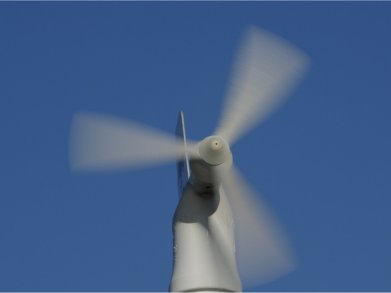Guannan Wang, Basman El Hadidi, Jakub Walczak, Mark Glauser and Hiroshi Higuchi, Syracuse University, USA, are testing new intelligent-systems-based active flow control methods with support from the U.S. Department of Energy through the University of Minnesota Wind Energy Consortium. The approach estimates the flow conditions over the blade surfaces from surface measurements and then feeds this information to an intelligent controller to implement real-time actuation on the blades to control the airflow and increase the overall efficiency of the wind turbine system. The work may also reduce excessive noise and vibration due to flow separation.
Initial simulation results suggest that flow control applied on the outboard side of the blade beyond the half radius could significantly enlarge the overall operational range of the wind turbine with the same rated power output or considerably increase the rated output power for the same level of operational range.
Another problem with wind energy is drag, the resistance felt by the turbine blades as they beat the air. Roger Arndt, Leonardo P. Chamorro and Fotis Sotiropoulos, University of Minnesota, USA, have been looking at the drag-reduction effect of placing tiny grooves on turbine blades. The grooves are 40 and 225 microns and in the form of triangular riblets scored into a coating on the blade surface. They are believed to increase wind turbine efficiency by about 3 %.
- original press release: EurekAlert




